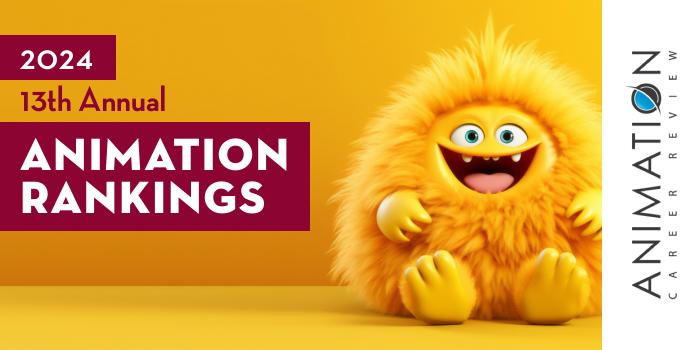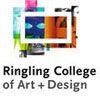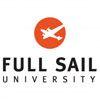The College of Arts and Humanities at the University of Central Florida (UCF) houses the School of Visual Arts & Design (SVAD), home to the Emerging Media Program. Degree options for animators are available at both the undergraduate and graduate levels. The Emerging Media BFA has tracks in Character Animation and Experimental Animation. The MFA in Emerging Media has an Animation and Visual Effects Track.
Character Animation and Experimental Animation are portfolio-based, highly competitive tracks that take place in a studio-environment that mirrors today’s professional studios. Students in both tracks also benefit from faculty mentors; courses taught by industry professionals and in multiple areas such as storytelling, technology, art, and design; access to state-of-the-art production labs; and internship opportunities.
Course examples for the Character Animation track include Advanced 3D Animation; Digital Effects and Compositing; New Imagery in Motion Workshop; 3D Textures; Visual Storytelling and Visual Development; Digital Production in Artificial Environments; and Character Animation Portfolio Review.
Course examples for the Experimental Animation track include Advanced Experimental Animation; Experimental Animation Workshop; Experimental Animation Professional Practice; and Experimental Animation Portfolio. Students in this track will also complete the BFA thesis project with exhibition/screening.
Both BFA tracks allow students to work their way through the production pipeline from story creation to film completion. After completing general education and other program requirements, the Emerging Media tracks take two years to complete, full-time.
The Emerging Media MFA with an Animation & Visual Effects track is a 60 credit hour program that focuses on narrative film structure and the entrepreneurial aspects of animation as it relates to independent filmmaking, studio employment, and job creation. Program benefits include the opportunity to create an animation and/or visual effects thesis using techniques such as stop motion, 2D and 3D computer animation, and traditional hand-drawn; co-directing opportunities; and access to state-of-the-art labs and studios. This competitive program requires 60 credit hours of study, completed over three years, full-time.
Graduates of the Emerging Media programs at University of Central Florida are Animators, Effects Artists, Story Artists, Modelers, Visual Development Artists, Lighting Artists, Riggers, Technical Artists, and Texture Artists. Program alumni are employed with major studios and gaming companies such as Pixar, DreamWorks, Disney, and Electronic Arts (EA).
The College of Sciences at University of Central Florida has an additional option for animators seeking a graduate degree. Housed within the College of Sciences is Nichols School of Communication & Media—home to Florida Interactive Entertainment Academy (FIEA). Established in partnership with the city of Orlando, the state of Florida, and UCF, FIEA enrolls more than 130 students annually.
UCF FIEA has an Interactive Entertainment MS that provides the opportunity for students to compete and internship and work in production teams mentored by industry professionals. These mentors provide instruction in areas such as 3D animation and modeling, software engineering, game design, motion capture, technical art, and creative collaboration.
The Interactive Entertainment MS requires 30 credit hours of study, including 12 credit hours of core courses, nine credit hours in a specialization (Art, Production or Programming), a practicum, and a capstone experience. The Capstone results in a large-scale project that will be presented at a special event for the FIEA community and invited guests.
Graduates of the Florida Interactive Entertainment Academy at University of Central Florida are prepared to pursue careers at major studios across the U.S. and abroad. Program alumni have been hired at companies and studios such as Universal, Blizzard Entertainment, Industrial Light & Magic (ILM), Marvel, Sony, Walt Disney Imagineering, Gameloft, Nintendo, Electronic Arts (EA), DreamWorks, Google, Microsoft Studios, and Zynga.
University of Central Florida opened in 1968 as Florida Technological University. On the first day of classes, the school had less than 2,000 students. Today, UCF serves approximately 68,440 students, making it the largest university by enrollment in the state of Florida, and one of the top 10 largest universities in the U.S. The school provides 243 bachelor’s degrees, 219 master’s degrees, and 81 doctorate degrees across 13 colleges. University of Central Florida is accredited by the Southern Association of Colleges and Schools Commission on Colleges (SACSCOC).












